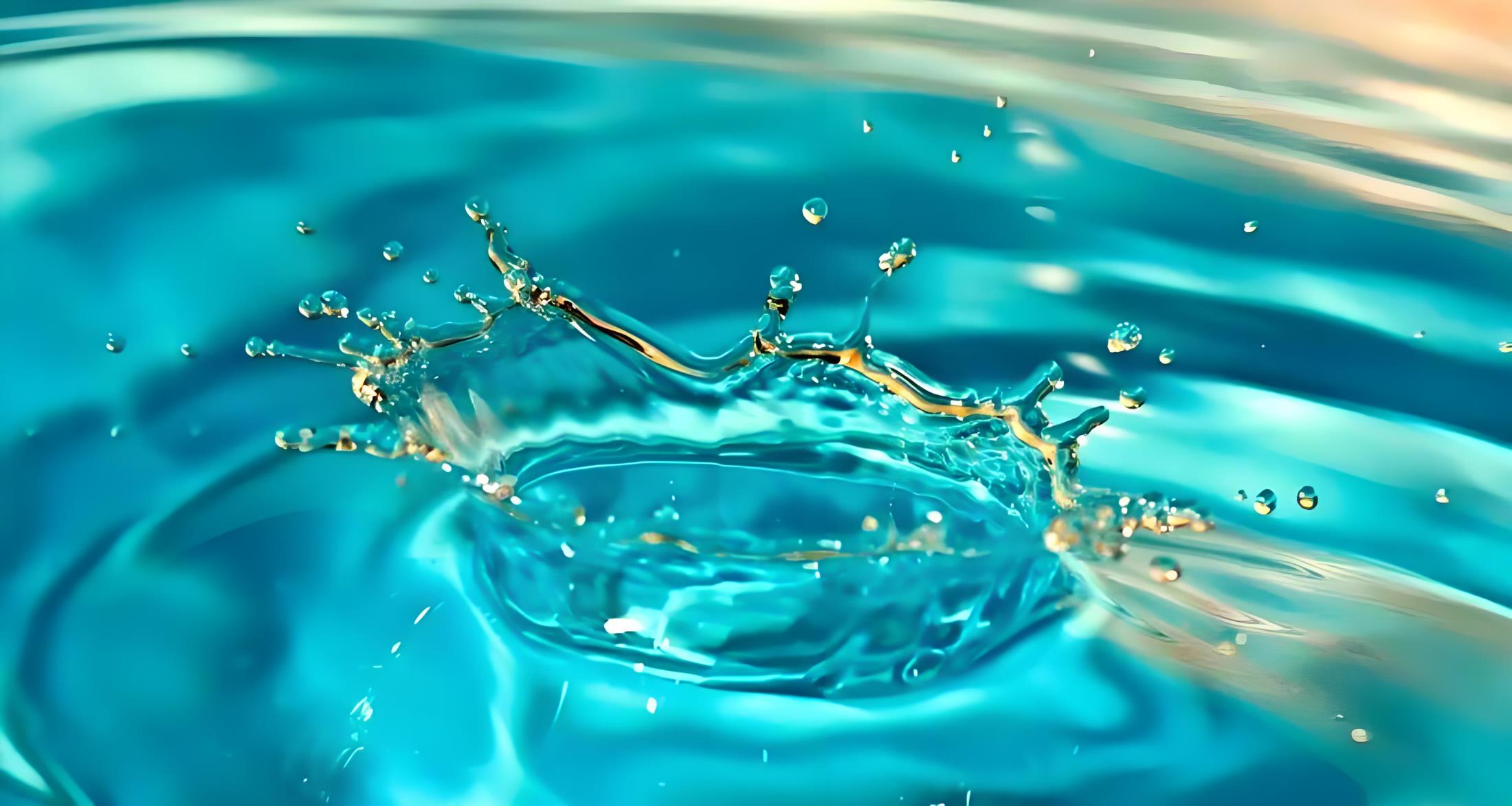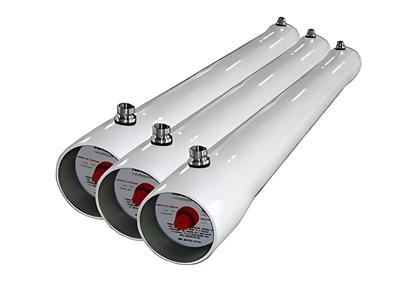- 2025-07-25
What is deionized water? Can I drink it?
When choosing water, have you ever noticed deionized water and wondered: What is deionized water? Is it safe to drink? This article will introduce the characteristics, applications, and methods of obtaining deionized water in detail.
1. What is deionized water?
Deionized water, also called softened water, DI water, or DM water, refers to water that has been deionized and contains almost no ions or charges. Ions are atoms or molecules with positive or negative charges, usually present in water in the form of dissolved minerals. Common dissolved salts and minerals include sodium, magnesium, calcium, iron, iodine, chlorides, sulfates, nitrates, carbonates, and silica.
The pH value of deionized water is 7, which is very reactive and easily reacts with other substances. Its resistivity is usually 0.055 µS/cm and its resistivity is 18.2 mΩ/cm. At 25°C, the resistivity of deionized water can reach 18 megohms, indicating that it does not contain impurities and has very good insulation properties. Moreover, because all ions are removed, deionized water is generally colorless and tasteless. It is these characteristics that make deionized water play a key role in many industries that require high-purity water.
2. Why is it important?
Deionized water has high purity and low conductivity, which is of great significance in many application scenarios. It can minimize the interference of impurities in water on scientific and medical product technology research and chemical experimental analysis, ensuring the purity and safety of these products. Therefore, deionized water is an ideal choice for pharmaceutical, medical applications and laboratories.
Deionized water has almost no minerals and impurities, which can prevent scale from forming and accumulating in industrial equipment, household appliances and pipes. Some industrial projects use deionized water to prevent equipment scaling and corrosion, which can extend the service life of equipment and reduce maintenance costs, such as in boilers, cooling towers and other heat exchange systems.
In addition, in the cleaning industry and the manufacturing process of high-quality electronic components and semiconductor products, the use of deionized water can ensure the cleaning effect and product quality of precision equipment, because deionized water does not contain impurity ions that affect product quality, nor does it contain minerals that can cause water spots.
3. Can I drink deionized water?
Yes, deionized water has been treated to remove most of the dissolved salts, minerals and other impurities. It is very pure and can be drunk in small amounts. This soft water has low mineral content and can make hair and skin smoother and more lustrous.
However, deionized water lacks essential minerals such as calcium and magnesium for humans and plants, and tastes bland. Although the human body mainly relies on food to obtain minerals and trace elements, deionized water may still contain organic pollutants, bacteria and viruses.
Ordinary tap water treated by a water treatment plant usually has most of the ions and harmful impurities removed and can be drunk directly. If you are worried about chlorine contamination in the pipes, or problems such as lead, copper, and iron, you can consider installing a home water purifier.
4. How to make deionized water?
Common methods for producing deionized water include deionization technology, electrodeionization, reverse osmosis and distillation. Here is an introduction to their principles:
(I) Ion exchange
Ion exchange (IX) is a water treatment process that uses cation exchange resins and anion exchange resins to achieve ion exchange reactions. Cation exchange resins have negatively charged functional groups that can attract cations in water (such as calcium, magnesium and sodium), releasing hydrogen ions in the process.
Similarly, anion exchange resins adsorb anions in water (such as chloride ions, sulfate ions, etc.) and release hydroxide ions. Hydrogen ions and hydroxide ions combine to form water molecules, which greatly reduces the concentration of other ions and obtains pure deionized water.
(II) Electrodeionization
Electrodeionization (EDI), also known as electrodeionization, is a method that combines electrodialysis and ion exchange technologies to remove ions from water using electric current, ion exchange and resins. When water enters the EDI module, ions are adsorbed by cation exchange resins and anion exchange resins, and then replaced by hydrogen ions and hydroxide ions. Under the action of an external electric field, cations on the cation exchange resin and anions on the anion exchange resin migrate through the semipermeable membrane to different compartments.
This process also produces hydrogen ions and hydroxide ions, which can maintain the regeneration capacity of the cation and anion resins. The ions in the compartments form concentrated wastewater and are discharged, leaving highly purified water. This continuous ion exchange and electric field-driven deionization process make EDI technology both economical and efficient.
(III) Reverse Osmosis
Reverse Osmosis (RO) is a membrane separation process that separates solvents from solutions by pressure difference. It works by applying pressure on one side of the RO membrane. When the pressure exceeds the osmotic pressure of the solution, only water molecules can pass through the selective semipermeable membrane in the opposite direction of natural osmosis.
The ions, organic compounds and dissolved salt particles in the feed water are highly concentrated into a concentrate, and pure deionized water can be obtained at the other end.
(IIII)Distillation
The working principle of distillation is to use the difference in the boiling points of substances. After water is heated and boiled, it turns into steam, which is then cooled through a condenser and condensed into liquid water in a clean collection container. Most of the dissolved substances and ions will remain in the evaporator, so that highly pure water is obtained.
5. Is deionized water the same as distilled water?
Although DI water and distilled water are both high-purity water, they are not the same. The main difference is reflected in the preparation method and purity level.
Deionized water is usually produced by chemical treatment methods. The common production methods and their working principles have been mentioned before. The deionization process removes almost all ions and soluble salts in the water. The water purity is very high and is suitable for industries such as pharmaceuticals, aviation, and semiconductors that have strict requirements on the ion content in water.
Distillation is a physical treatment method that heats water to boiling, and the water vapor produced is condensed into liquid, while most of the soluble substances and impurities will remain in the distillation device. It should be noted that the distilled water obtained after only one distillation is not of high purity. Only after multiple stages of distillation can extremely pure distilled water be obtained. Compared with the production of deionized water, the distillation process requires higher energy consumption and more complex equipment, and the cost is also higher. Distilled water is widely used in medical, laboratory, cosmetics, automobile maintenance, household appliances, and food and beverage processing due to its extremely high purity.
6. What is the use of deionized water?
Electronic manufacturing: used for the production and cleaning of electronic components.
Drug production: can be used for drug preparation and solvent preparation.
Laboratory: used for experiments and cleaning of laboratory equipment, such as Class 1 and Class 2 deionized water.
Automobile: used for cooling systems, battery maintenance and car cleaning.
Sterilization: used for autoclaves and surgical instrument cleaning.
Dialysis: required for the purification process in dialysis machines.
Ingredient preparation: used in the production of food and beverages.
Cleaning: can be used for equipment cleaning.
Cosmetic formulation: is a basic ingredient in cosmetics, shampoos and skin care products.
Cooling systems: such as boiler cooling water, cooling towers and heat exchangers.
Chemical analysis: used for analytical technology.
Biotechnology: used for the preparation of culture media and reagents.
Water quality management: maintain optimal water quality conditions for aquatic organisms.
7. How to get deionized water?
If your demand for deionized water is not large, you can buy it directly from supermarkets, online stores, or pharmaceutical and laboratory suppliers.
But if you need a large amount of deionized water, it is recommended to choose a suitable deionized water system and consider the following factors:
Water quality standards/requirements for your specific purpose
Water source quality
Daily water production/flow
Equipment type (such as RO, DI, EDI)
Maintenance and operating cost budget
Equipment brand and model
System certification and standards
In addition, high purity requirements may require a combination of multiple technologies. For industrial ultrapure water applications, it may involve a combination of a high-performance dual-pass RO system with EDI, or RO + DI technology.
It is critical to choose well-known brands and equipment that meet industry standards. You can find our deionized water filtration products on our website.
If you have difficulty choosing a model, it is recommended that you consult the supplier directly or contact our professional water treatment engineers to ensure that you choose the deionized water system that best meets your needs.
8. Frequently Asked Questions
1. What is the difference between deionized water and reverse osmosis water?
Deionized water (DI water) and reverse osmosis water (RO water) are two different types of pure water.
Deionized water is generally produced using ion exchange resins or electrodeionization (EDI) technology, which can remove almost all cations and anions in water, so the conductivity is extremely low, almost close to zero. It is suitable for applications with high requirements for pure water quality.
RO water is filtered through a reverse osmosis membrane, which can remove most dissolved substances, including ions, organic matter and microorganisms. However, RO water cannot remove all ions, and its conductivity is slightly higher than that of deionized water, so its purity is relatively low.
RO water is more suitable for home drinking water purification, food processing, commercial water purification, and general laboratory purposes. You can learn more about this topic in the article "Deionized Water vs. RO Water".
2. Will deionized water go bad?
Deionized water (DI water) itself will not go bad because it contains almost no dissolved ions or microorganisms. However, it should be noted that DI water is easily contaminated during storage and use. For example, it may be contaminated by bacteria on the surface of the storage container, and it will absorb carbon dioxide and organic matter when exposed to air. These factors will reduce its purity and affect the stability and effectiveness of the water.
Therefore, when using and storing deionized water, it is important to keep the storage container clean and minimize long-term exposure to air to extend the shelf life of deionized water.
3. Can bacteria grow in deionized water?
Bacteria generally do not grow or reproduce in deionized water. This is because deionized water contains almost no dissolved ions and nutrients, which are precisely the elements necessary for bacterial growth and reproduction. The extremely low conductivity and high purity of deionized water are usually not conducive to the survival of bacteria. Therefore, it is widely used in industrial and laboratory scenarios that require a highly clean and sterile environment.
4. Is deionized water suitable for home use?
For some non-drinking water household scenarios, such as cleaning car windows, certain electronic devices and circuit boards, deionized water is a good choice. But be aware that deionized water will remove essential minerals for the human body, such as calcium and magnesium ions. Therefore, it is not recommended to drink deionized water.
In addition, deionized water equipment is relatively expensive, and operation and maintenance are also relatively complicated. Generally speaking, tap water treated by a water plant meets drinking water standards and is safe to drink. If you have higher standards for domestic water, you can install a whole-house filter or purchase a small household reverse osmosis filter.






